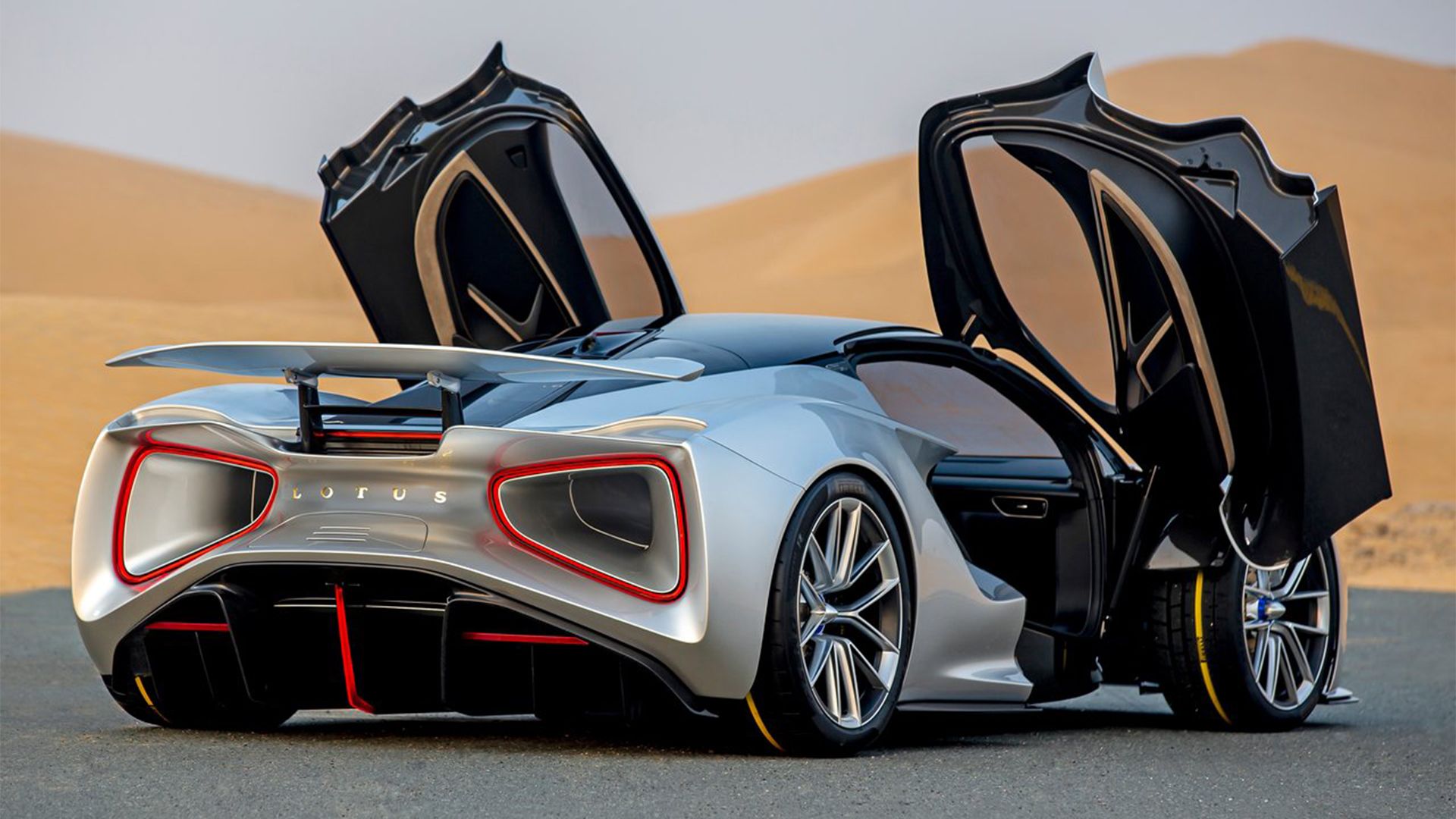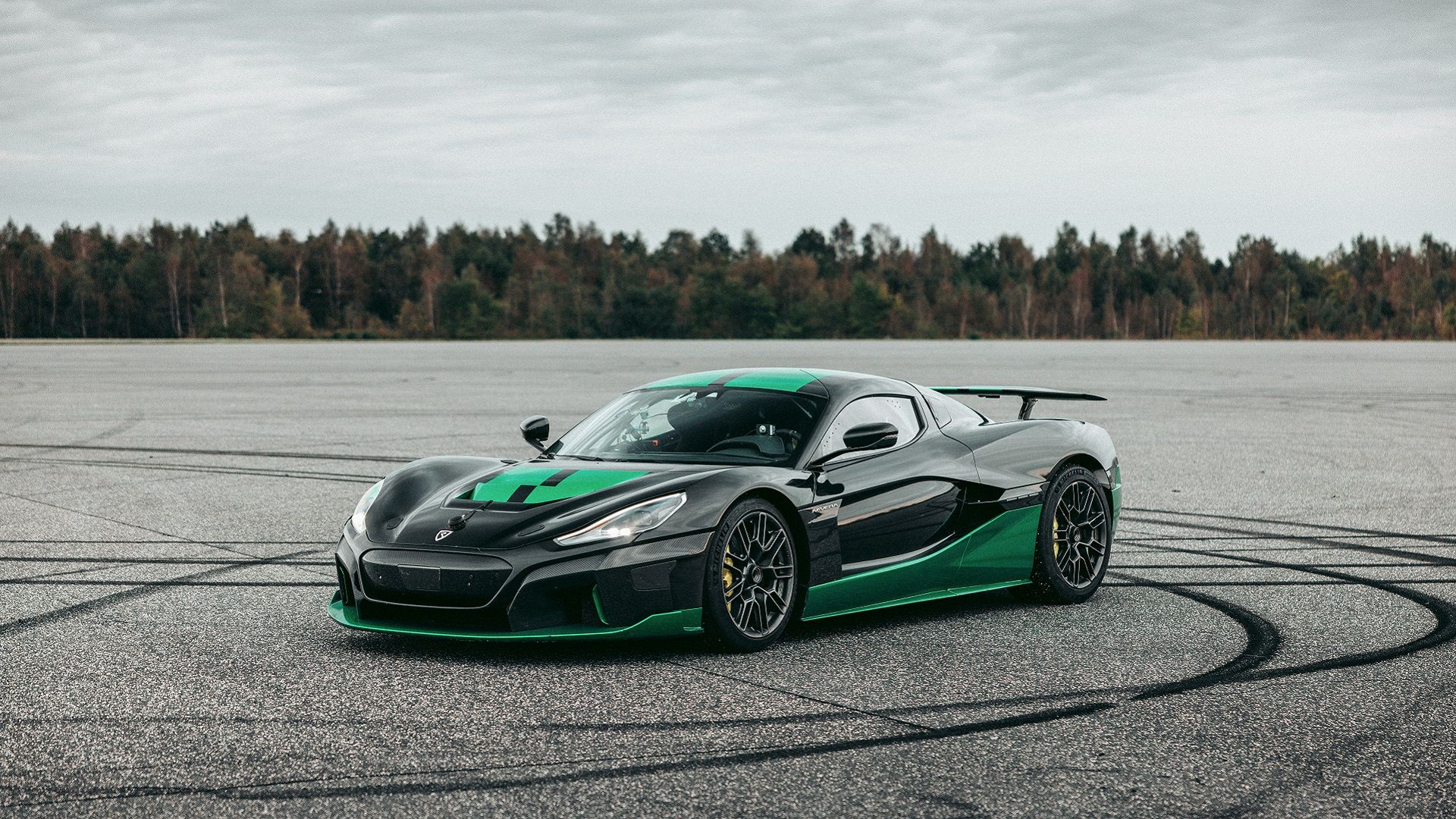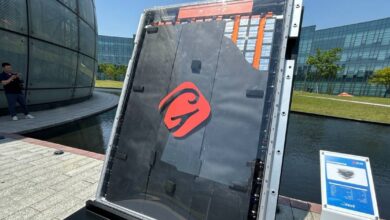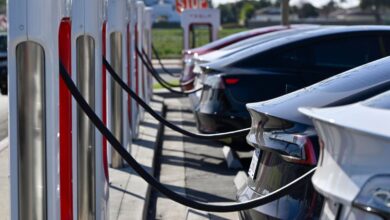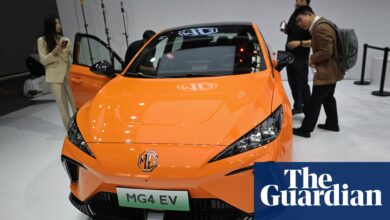The Highest Rated Horsepower Ever In A Production Electric Car

Key Takeaways
- The Lotus Evija is the world’s most powerful electric car with 2,011 horsepower and a top speed of 200 mph.
- Lotus is spearheading the electric car revolution, with models like the Eletre and Emeya following the powerful Evija.
- Rimac’s Nevera electric hypercar surpasses the Evija in top speed, hitting over 250 mph despite having less horsepower.
Although many traditional gearheads will moan and groan whenever electric cars are mentioned, it is hard to ignore the mind-blowing performance that these modern EVs can offer. Not only are powerful EVs blisteringly quick off the line, but some of them boast genuinely impressive horsepower outputs, high enough to scare off most gas-powered alternatives.
While there is no shortage of electric car concepts which promise insane outputs, this article focuses exclusively on genuine production models, with proven power figures. There’s currently a wide range of manufacturers churning out big-power EVs. Still, it might surprise you to learn that Lotus Cars currently holds the title as manufacturer of the world’s most powerful electric car.
HotCars has collected information primarily from manufacturer’s websites, such as Lotus and Rimac, in order to compile this article on the most powerful electric production cars ever produced.
The Most Powerful Electric Motorcycle In 2024
With a top speed of 218 MPH, the 2024 Lightning LS-218 is not just the most powerful but also the fastest electric motorcycle in production today.
The Lotus Evija Is The World’s Most Powerful Production Electric Car
Lotus Evija Fast Facts
- Power: 4 individual motors provide the Evija with a total of 2,011 horsepower
- Production: Unveiled in 2019, production of the Evija began in Summer 2020, with the first customer cars being delivered in late 2023
- Exclusivity: A maximum of 130 units will be built, with the first being delivered to Former F1 world champion, Jenson Button
The Lotus Evija Delivers An Industry-Leading 2,011 Horsepower
Ever since Bugatti launched its 1,001-horsepower Veyron, four-figure engine outputs have become almost commonplace among the most prestigious and exclusive hypercar manufacturers. This is likely the easiest way to distinguish a hypercar from a supercar – aside from the 7-figure price tags, of course.
Interestingly, the manufacturers chasing down these huge numbers take different approaches from one another, with brands such as Hennessey opting for pure gas power, and others, such as Koenigsegg, favoring a hybrid solution. Lotus, however, has jumped head first into EV production, and now boasts the title of the world’s most powerful electric production car, thanks to their flagship Evija model.
A world away from their low-output and low-weight sports cars of old, the Evija is a clear message to the world that Lotus has a bold and future-proof new direction for their latest production models.
To claim the title, the Evija uses four individual electric motors, one at each corner, to churn out a scarcely believable 2,011 horsepower – that works out to a Dark Horse Mustang’s output for each corner.
Only 130 examples of this industry-leading electric hypercar will be produced, with the very first being delivered last year, to none other than Jenson Button. As the 2009 Formula 1 world champion, he’s likely one of the very few people who actually possess the talent required to make the most of that 2,011 horsepower.

Add HotCars to your Google News feed.
Lotus Equips The Evija With Four Electric Motors
Lotus Evija Motor & Performance Specifications
|
Motor |
4 independently controlled high-power density electric motors |
|
Power |
2,011 horsepower |
|
Torque |
1,257 lb-ft |
|
0 to 60 MPH |
2.8 seconds |
|
Quarter Mile |
8.6 seconds |
|
Top Speed |
200 MPH |
(Specs courtesy of Lotus)
Each Wheel Of The Lotus Evija Has Its Own Independently Controlled Electric Motor
To provide a more accurate description, Lotus dubs the motors of choice for the Evija as ‘independently controlled high-power density electric motors’ and, unlike in other more typical electric cars, the Evija’s motors are not designed to maximize efficiency and range. Instead, the motors in the Evija are situated at each wheel, designed to produce devastating amounts of power and deliver a true hypercar experience.
The 2,011 horsepower on tap is enough to propel the Lotus from 0 to 60 mph in just 2.8 seconds, and it’ll only take the British hypercar 8.6 seconds to storm the full length of a quarter-mile strip. Find a road long enough, and this EV will hit 200 mph. While that isn’t the most impressive top speed for a hypercar, it’s an impressive effort for an EV, as few electric-exclusive cars can match or better the Evija for outright pace.
CarBuzz, reports that the Evija costs just north of $2 million, with blistering performance being the main attraction of this striking and insanely exclusive electric production car.
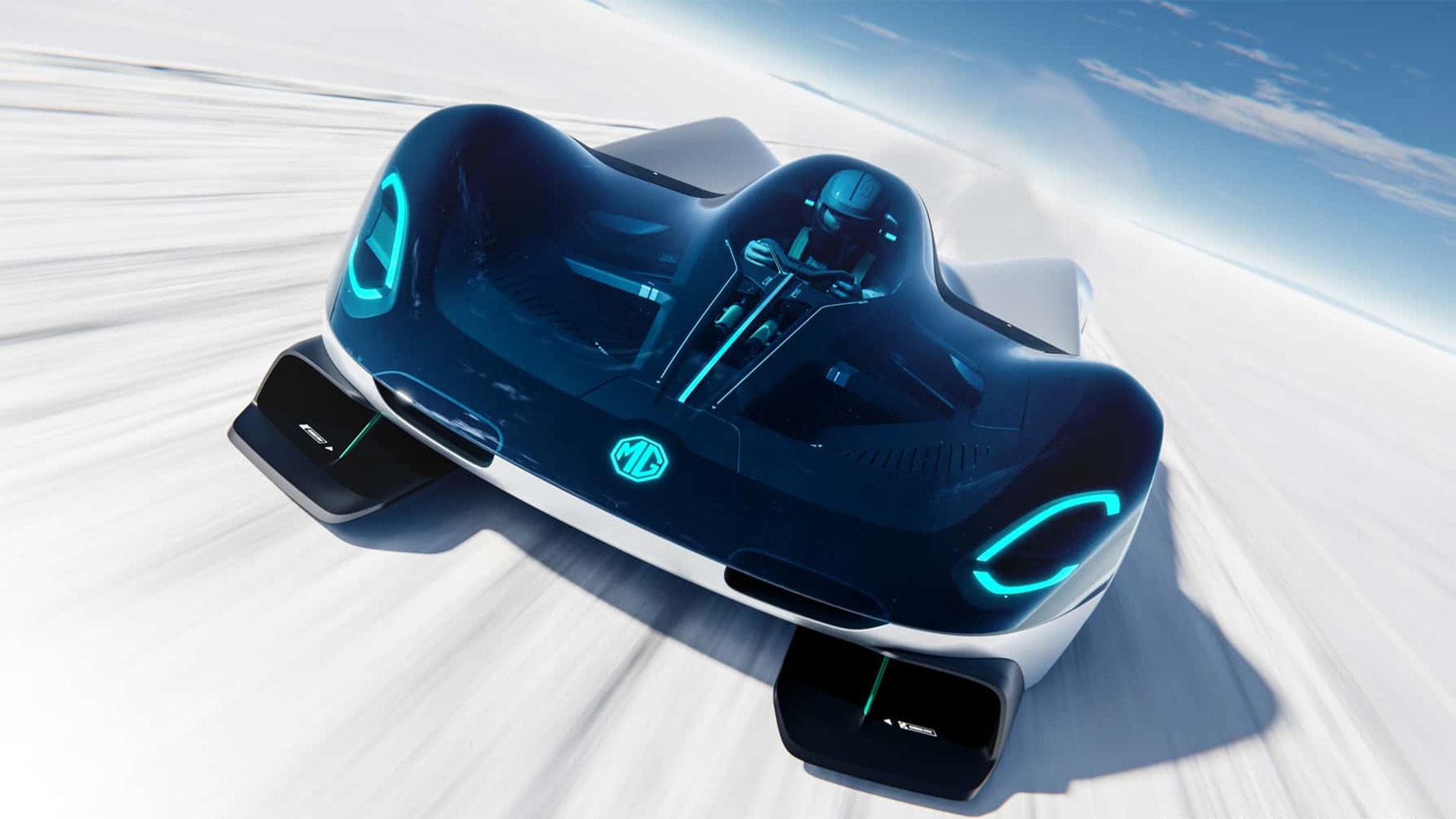
This New British Hyper Electric Concept Can Sprint From 0-62MPH In 1.9 Seconds
The MG EXE181 is a futuristic electric hypercar that will stun the competition.
Lotus Has A Selection Of High-Power Electric Cars In The Works
2023 Lotus Eletre Key Facts
|
Motor |
Dual electric motors |
|
Power |
905 horsepower |
|
Torque |
727 lb-ft |
|
0 to 60 MPH |
2.95 seconds |
|
Top Speed |
165 MPH |
(Specs courtesy of Lotus)
The Eletre is Lotus’s answer to other high-performance SUVs, like the Lamborghini Urus or Bentley Bentayga, just, in typical Lotus style, their car is more performance-orientated. Lotus has confirmed that prices will start from $107,000, or $145,000 for the more powerful Eletre R, with a maximum range for the model of 354 miles.
2025 Lotus Emeya Key Facts
|
Motor |
Dual electric motors |
|
Power |
905 horsepower |
|
Torque |
727 lb-ft |
|
0 to 60 MPH |
2.78 seconds |
|
Top Speed |
159 MPH |
(Specs courtesy of Lotus)
Set for release in 2025, the Lotus Emeya is a performance GT car, which should compete with the likes of Porsche’s Taycan, albeit with a sharper focus on driver enjoyment. Powered by the same dual electric motors as the Eletre R, the Emeya boasts a peak power output of 905 horsepower in addition to 727 lb-ft of torque.
Lotus Already Offers A Comprehensive Line-up Of Powerful EV Production Cars
It’s not just the Evija that is launching with EV power, as Lotus has confirmed they are going EV-only within the next few years. This update rocked the automotive world when CEO Matt Windle declared a new direction for Lotus, as it was such a dramatic new direction for the firm. However, models like the Eletre and Emeya (and, of course, the Evija) demonstrate how Lotus is not turning their back on driving enthusiasts, just because they’ve decided to adopt electric-only propulsion.
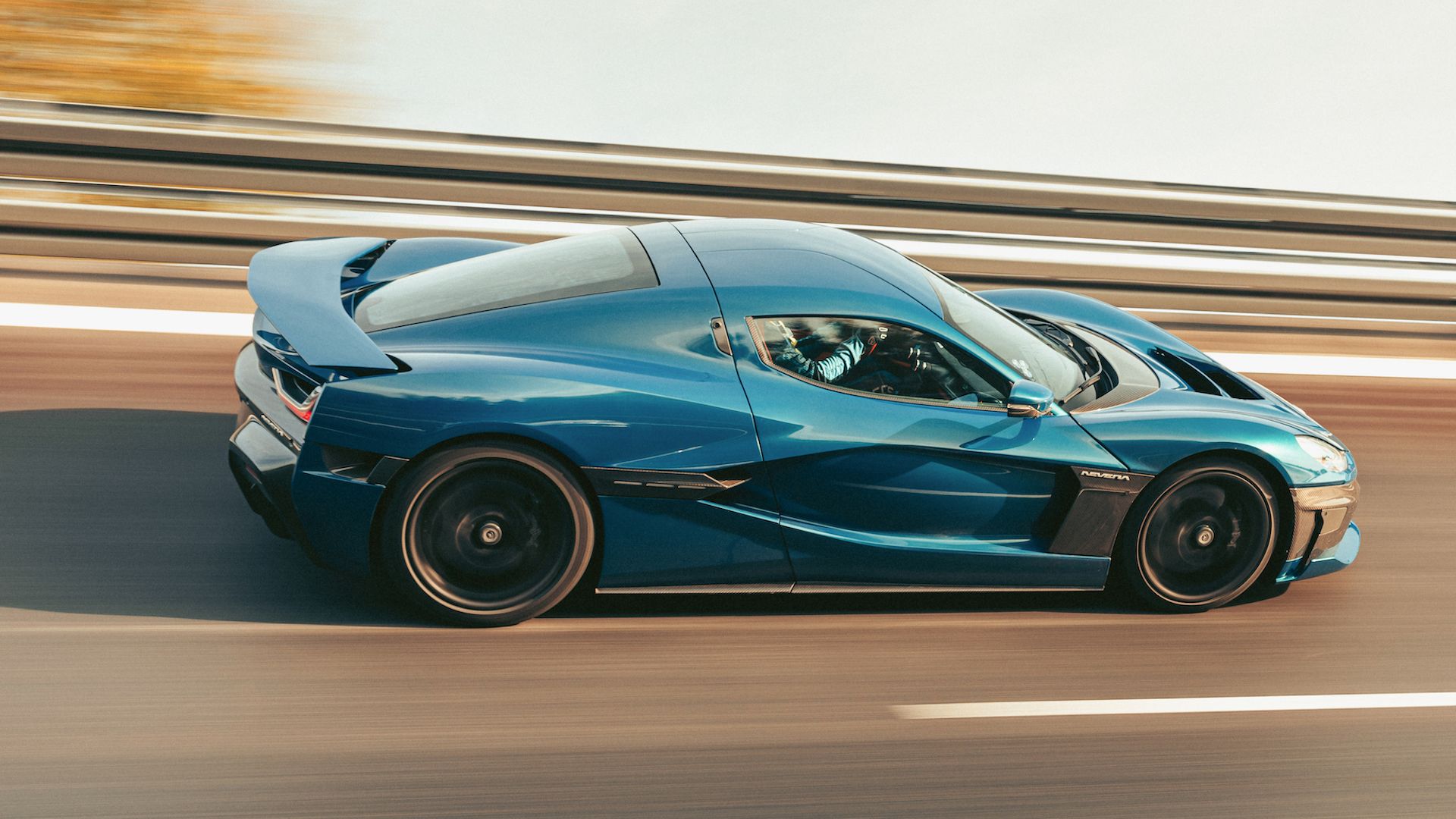
The Fastest Electric Cars In The World, Ranked
The top-ranked car on the list has almost 2,000 horsepower and can sprint to 60 mph in just 1.7 seconds.
The Less Powerful Rimac Nevera Boasts A Considerably Higher Top Speed Than The Lotus Evija
Rimac Nevera Fast Facts
- Motors: The Nevera boasts 4 electric motors, with one at each wheel, just like the Lotus Evija
- Power: Those 4 motors work in unison to provide a total of 1,400 horsepower
- Performance: Rimac’s Nevera can out-pace a Bugatti Veyron, thanks to a 258-mph top speed
The Rimac Nevera Boasts An Additional 58 MPH Over The Evija’s Top Speed
Despite packing that potent 2,011 horsepower punch, Lotus’s Evija can easily be out-paced at the top-end by some other seriously powerful electric hypercars. For example, the gorgeous Pininfarina Battista, which produces 1,900 horsepower, can achieve a 217-mph top speed; enough to show the Evija a clean set of heels on a long enough straight.
King of the EVs though, when it comes to top speed, is the Rimac Nevera. Somehow, with only 1,400 horsepower to play with, the Rimac manages to achieve speeds north of 250 mph, which is fast enough to dominate just about anything in a straight line, regardless of what powers the wheels. Just like the Evija, Rimac’s Nevera has an electric motor at each of the four wheels, but the gearing of these motors is set to prioritize top speed.
Sources: Lotus, Rimac, CarBuzz, TopSpeed, Automobili Pininfarina
